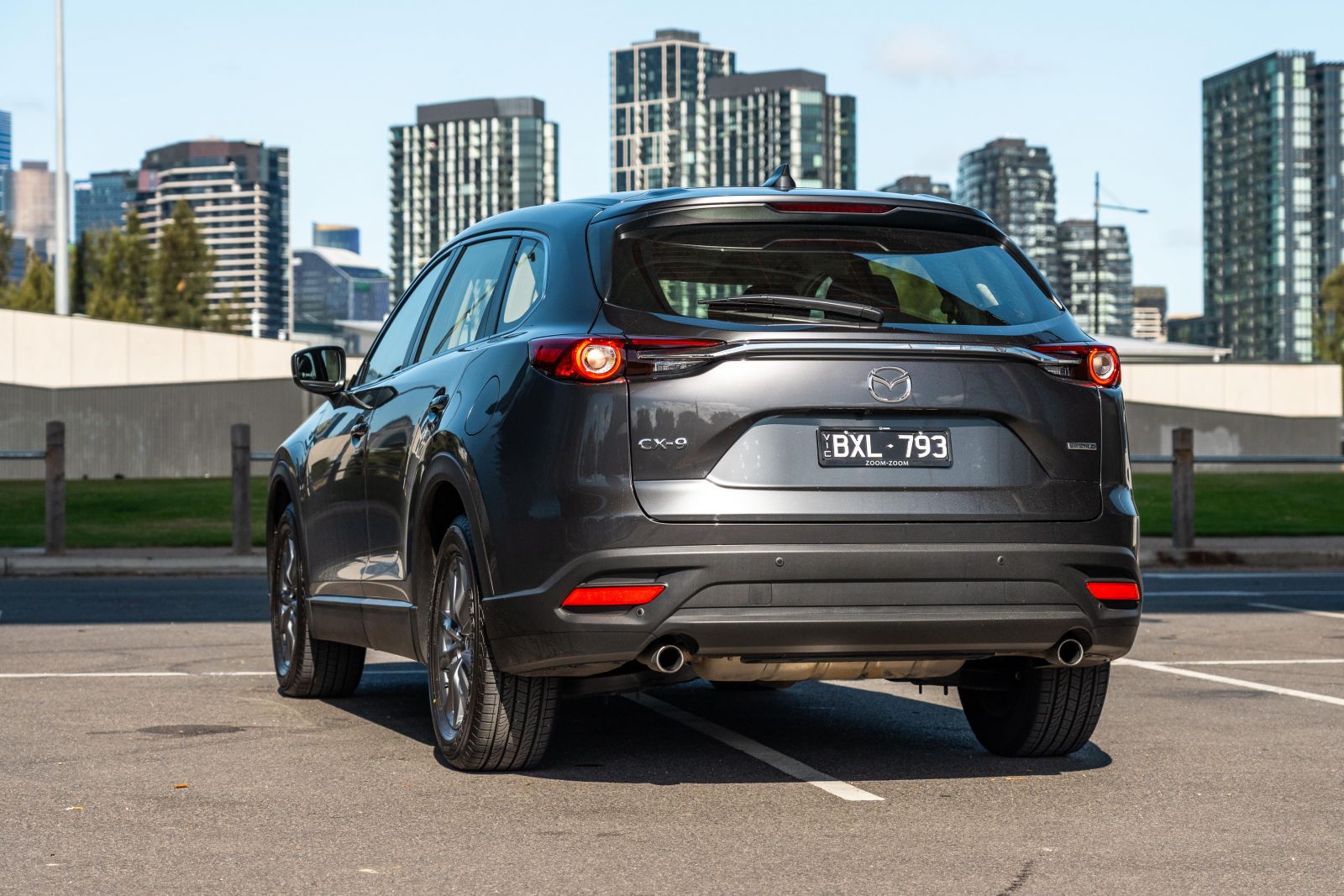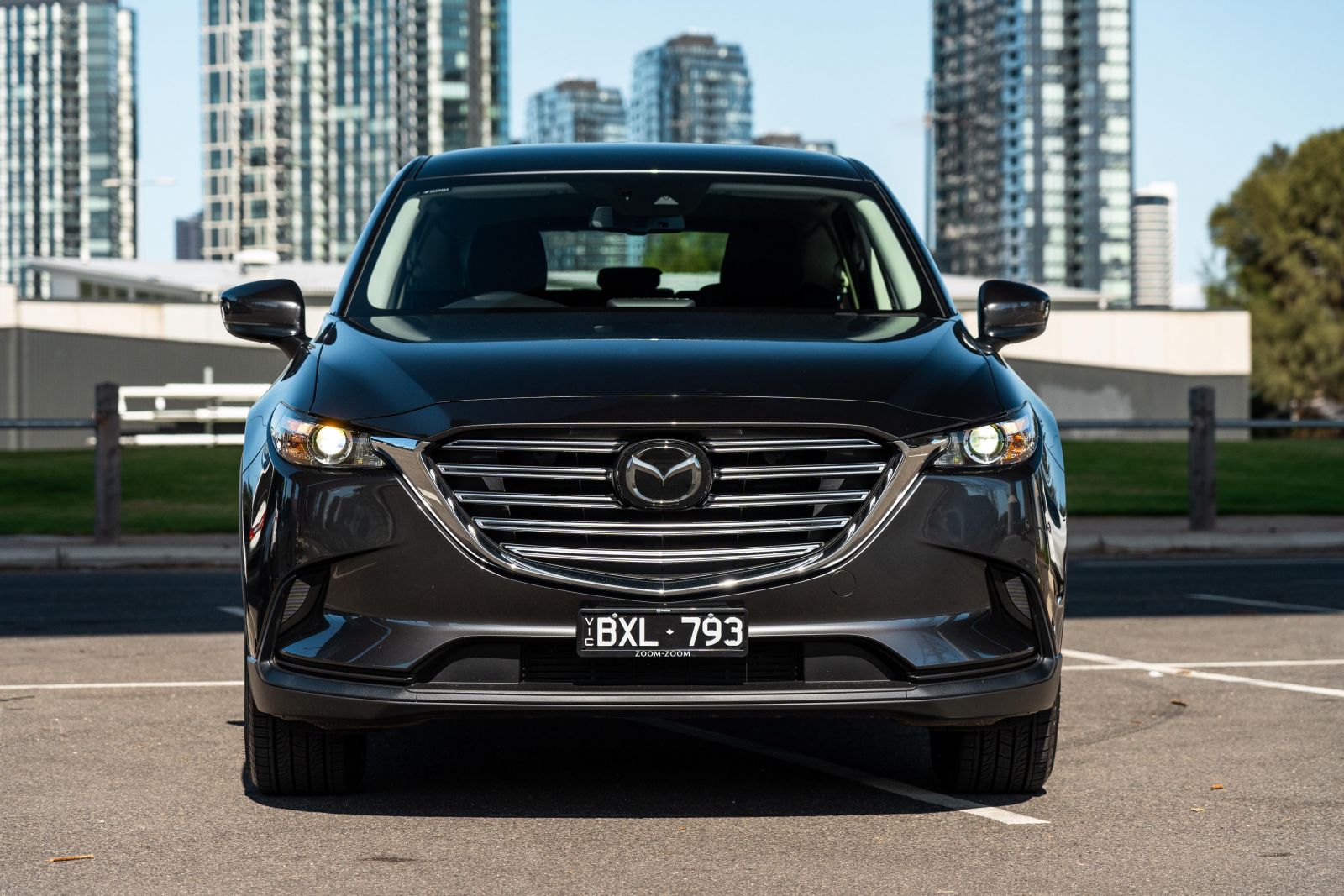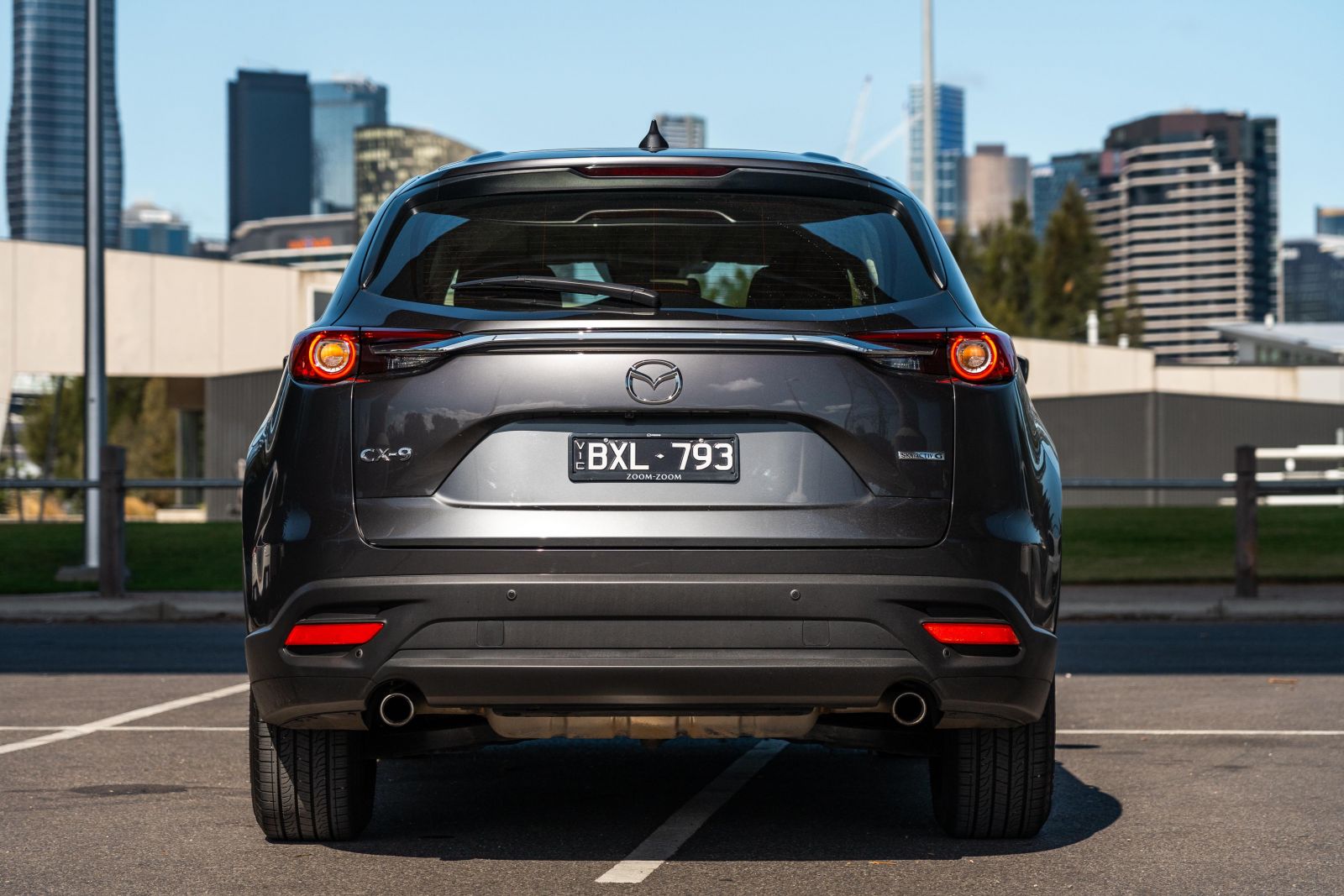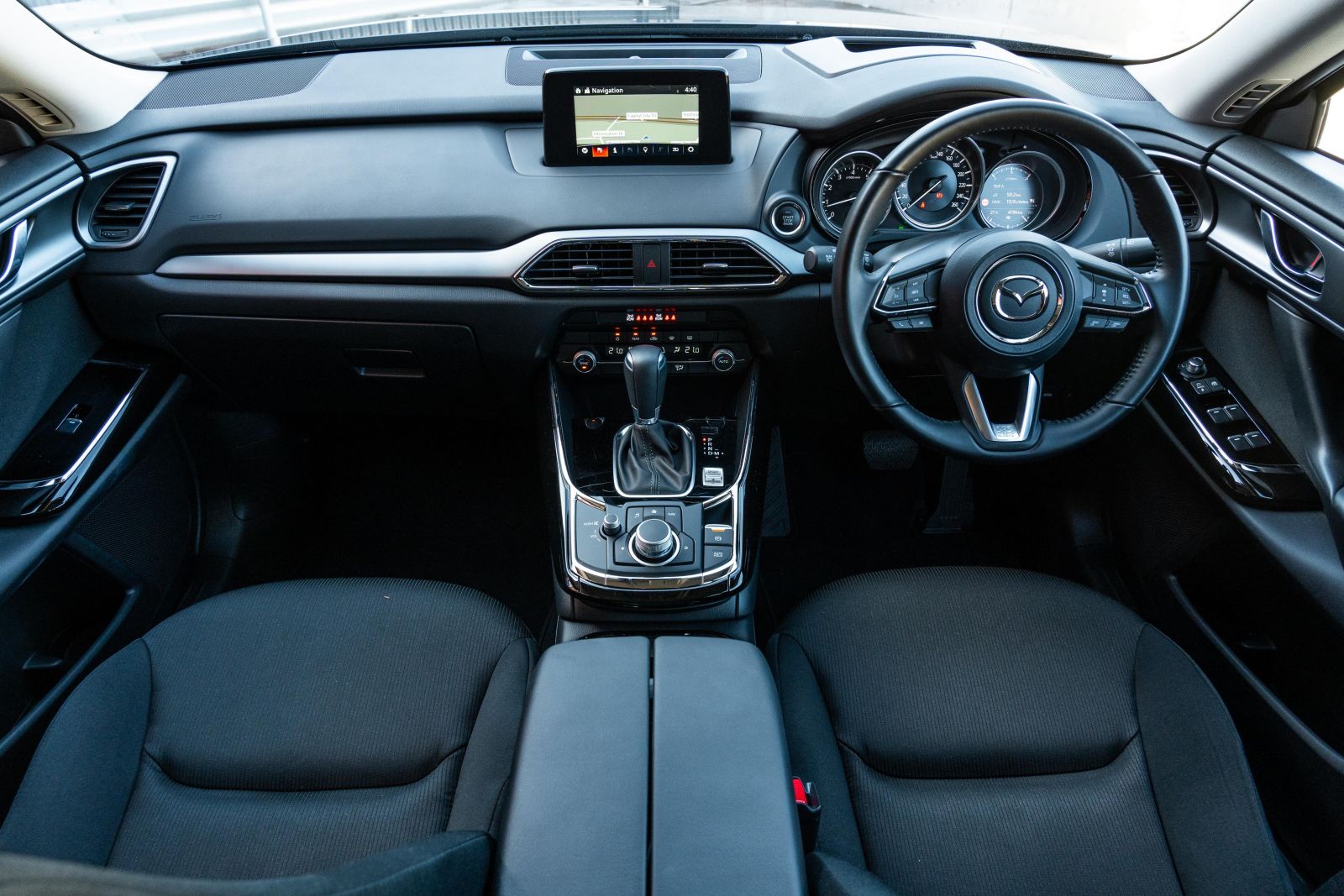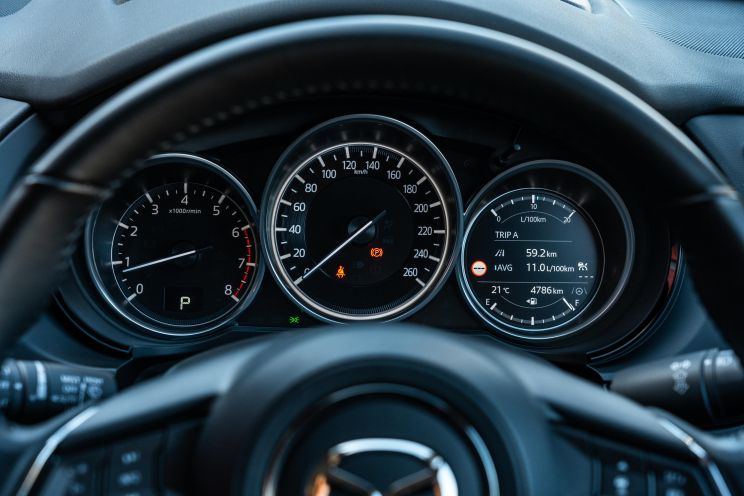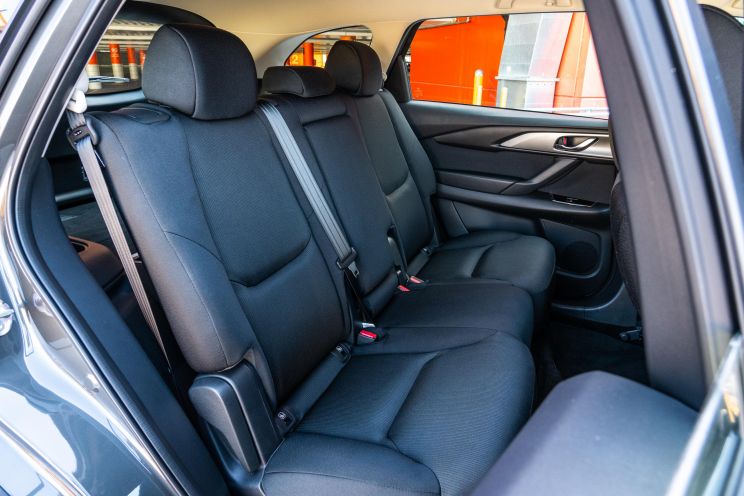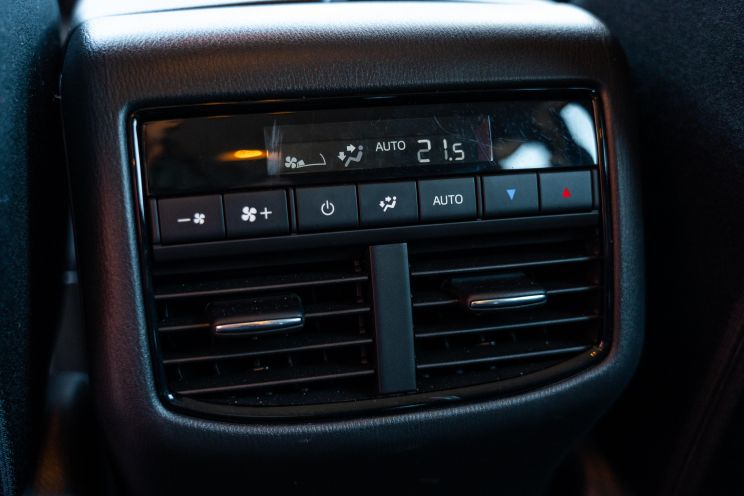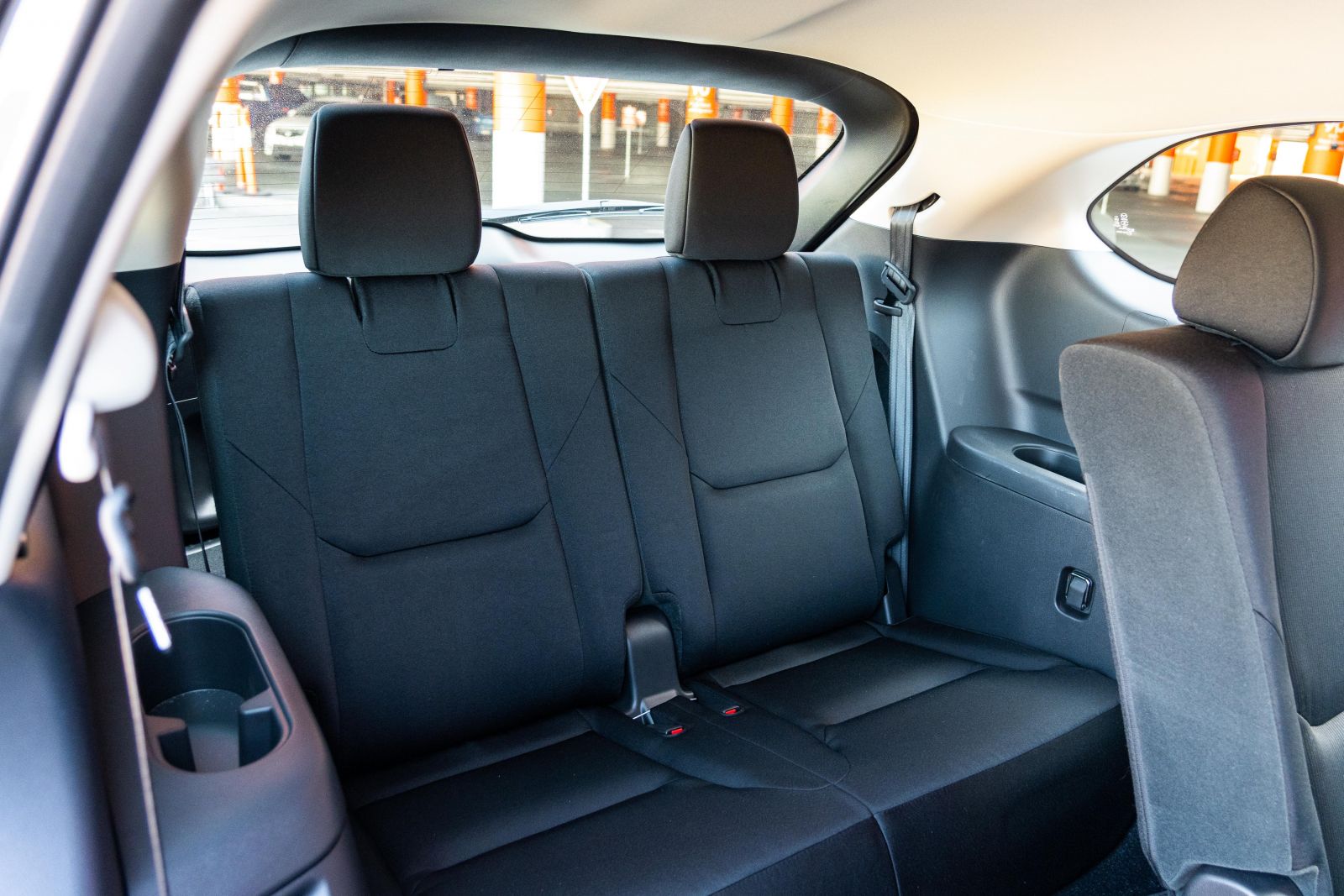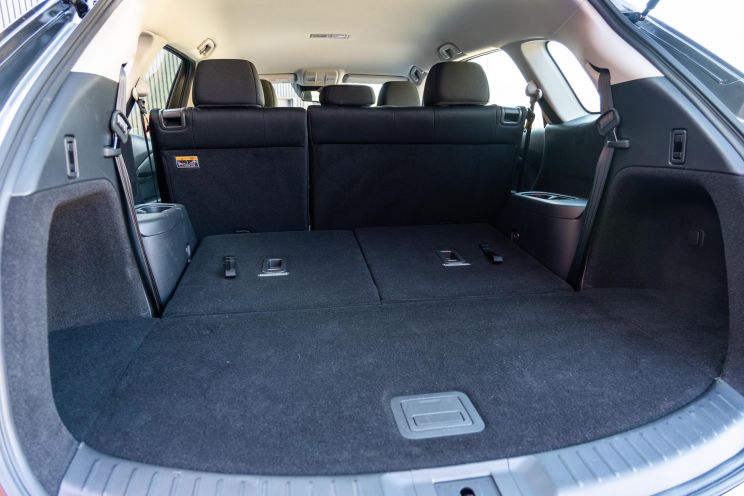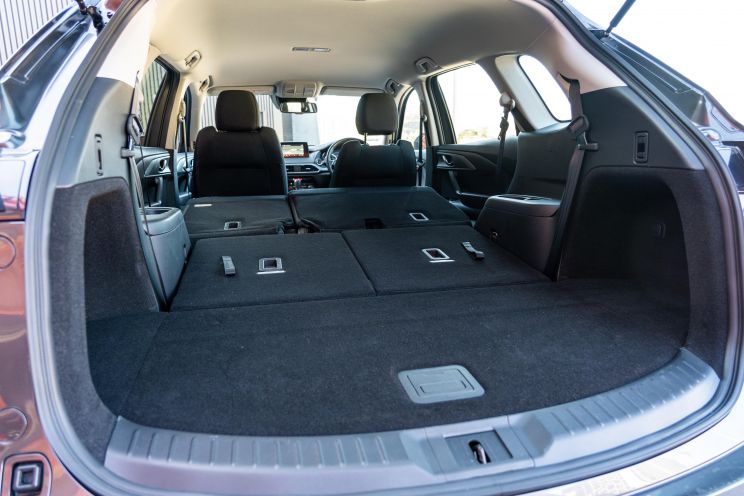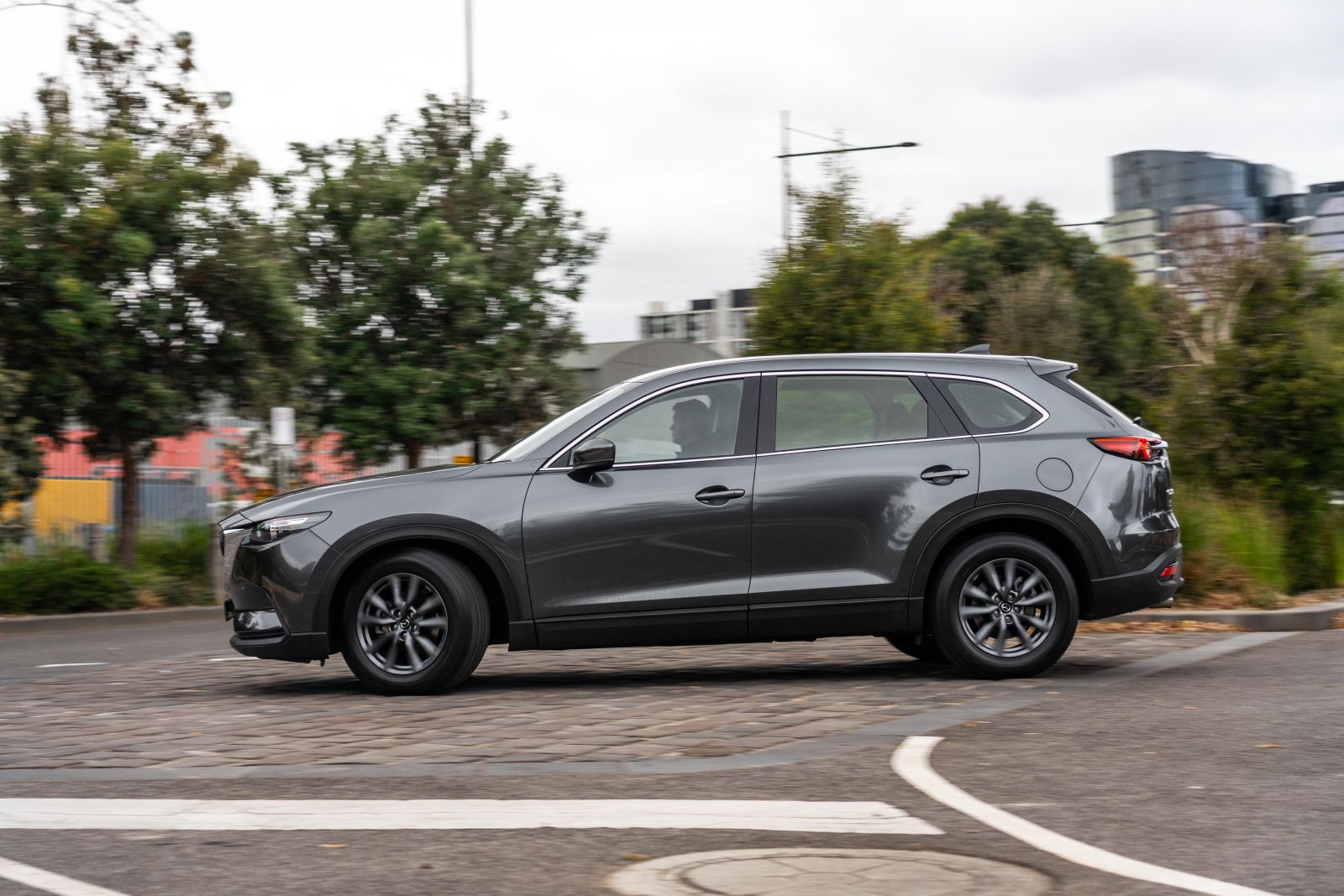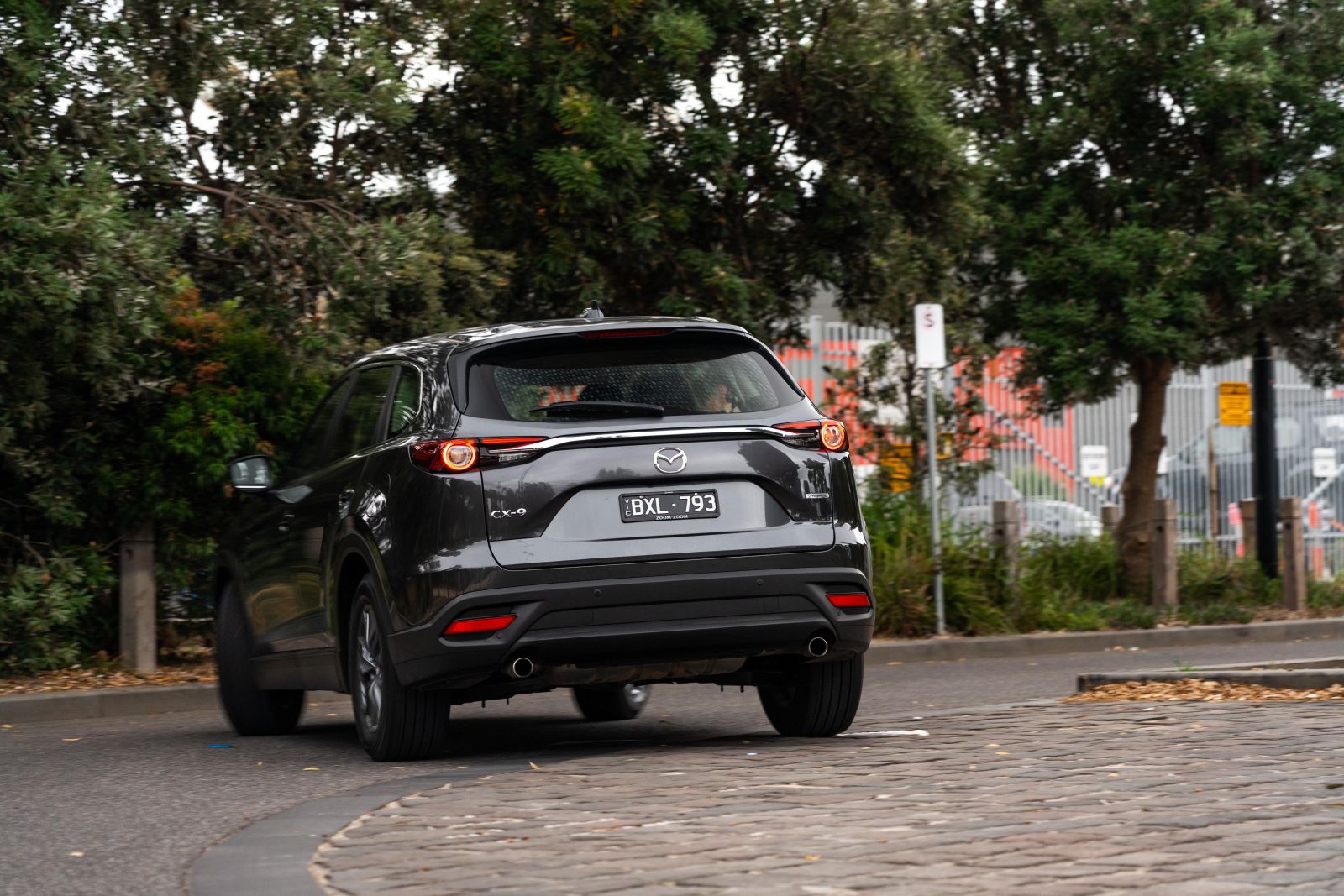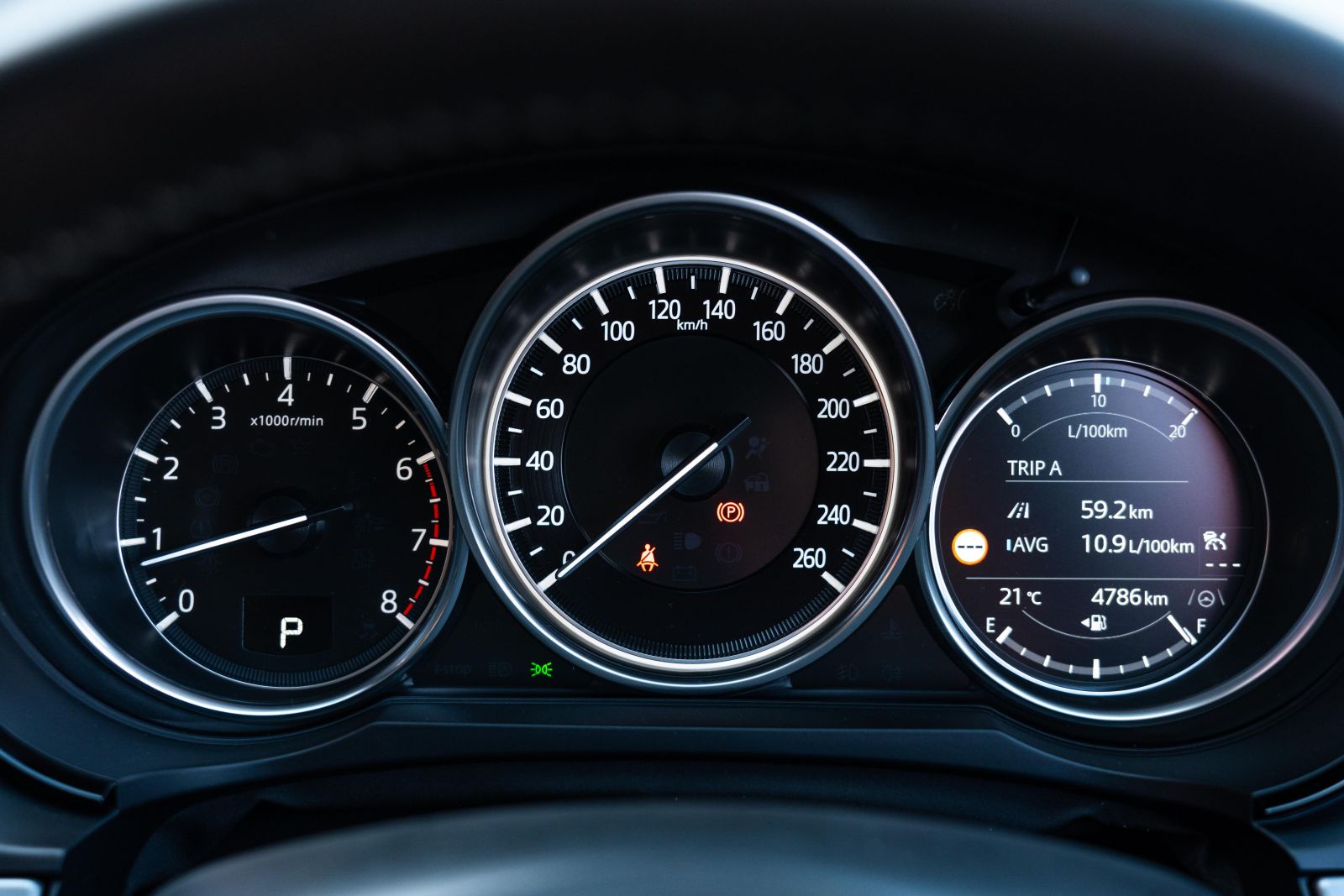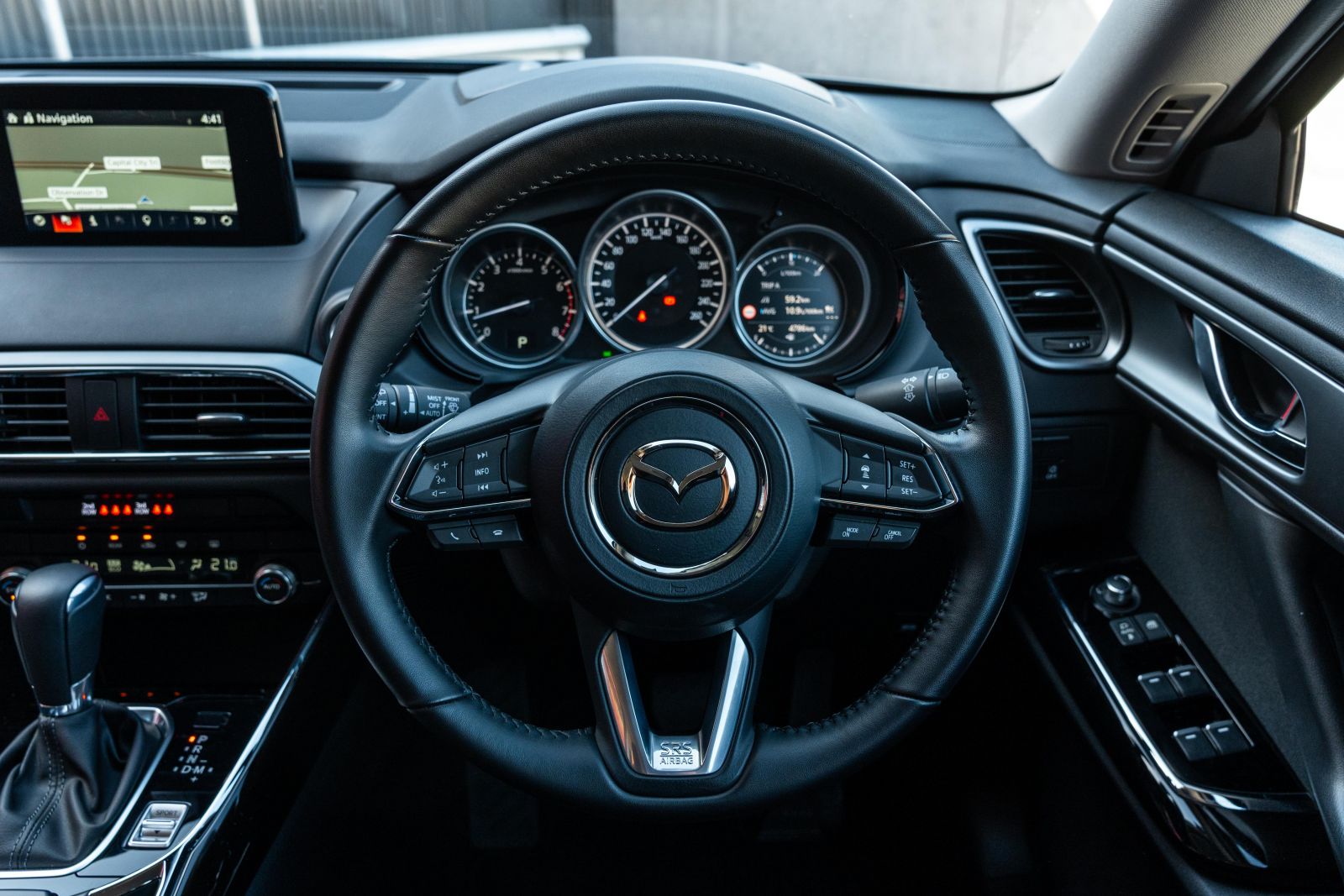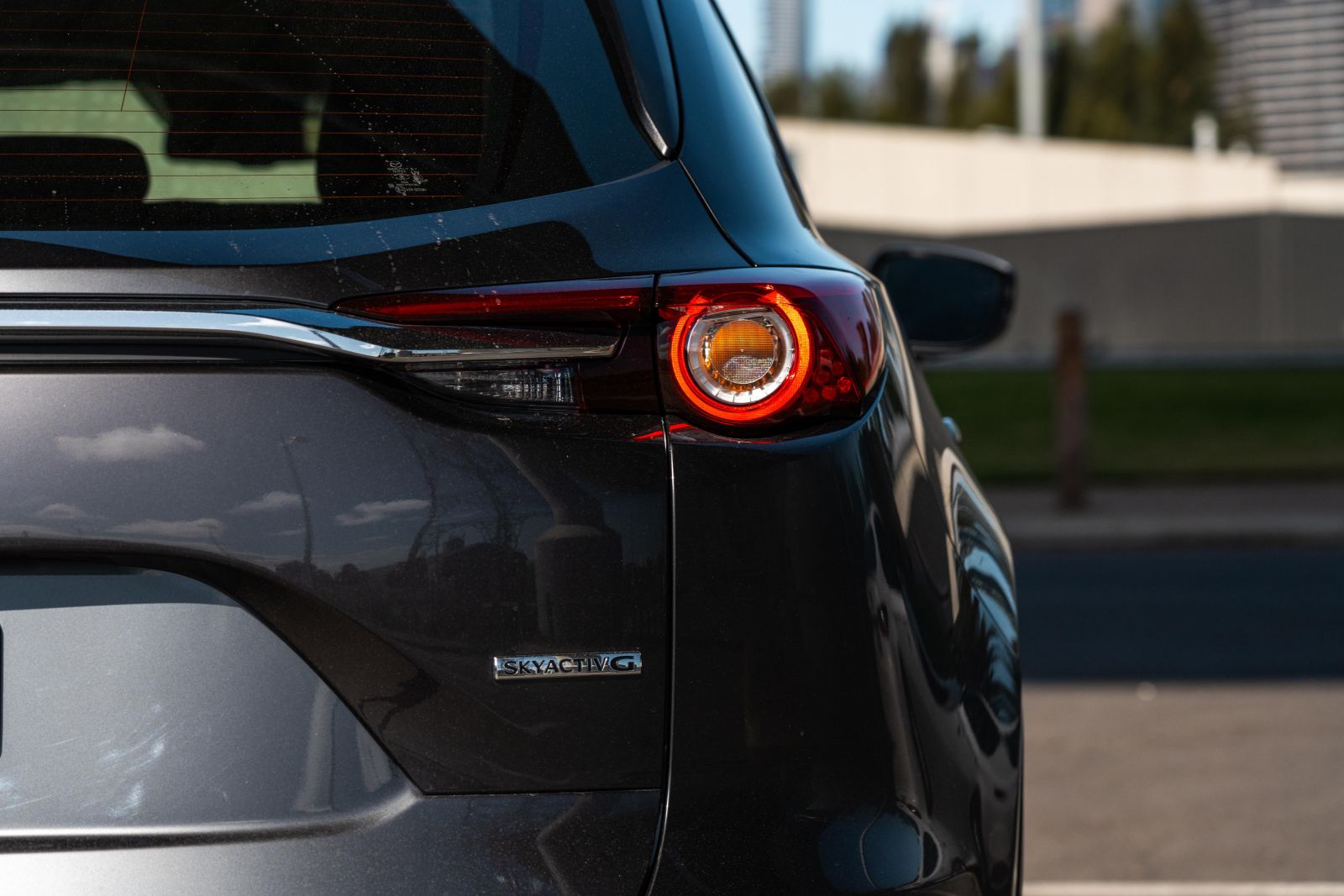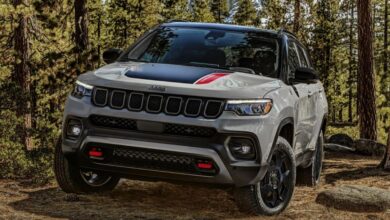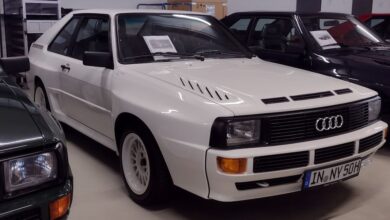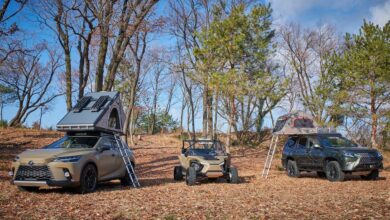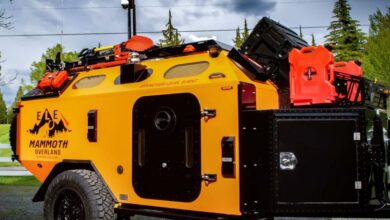2023 Mazda CX-9 Sport review
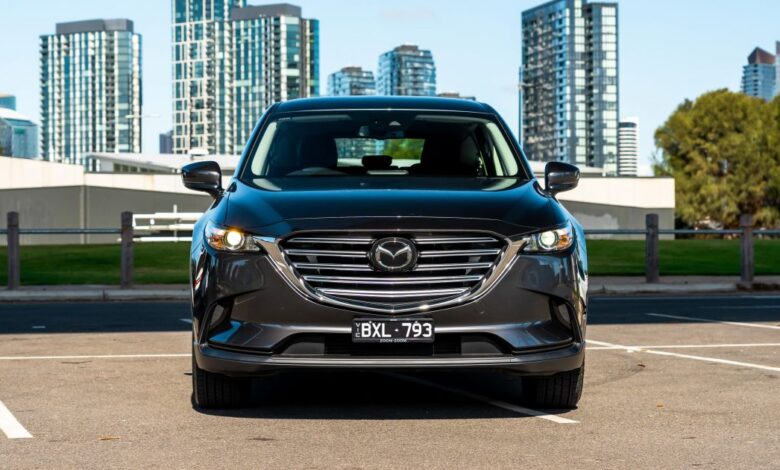
The Mazda CX-9 is an endangered species – about to be replaced by a newer, plusher CX-90.
Now six years old, the current-generation CX-9 has served as the Japanese brand’s flagship in markets like Australia and North America for some time, and has long been regarded as a benchmark for unibody large family crossovers.
On test we have the 2023 Mazda CX-9 Sport FWD, the absolute cheapest variant money can buy today. At $47,600 plus on-road costs, it’s a lot of metal for your money no matter how you look at it.
With space for seven, an exterior design that still looks smart six years since its release, and a quality cabin that has stood the test of time, the CX-9 makes a case for itself as affordable family transport.
Even at the bottom of the range, there’s plenty of features and space that could sway you from buying a mid- to high-spec alternative from the segment below.
Until the CX-90 lobs in August, the CX-9 will remain top dog in the Mazda line-up.
Are you better off nabbing one of these before the end of its run? Or, should you wait for the even bigger, even more expensive new CX-90?
How much does the Mazda CX-9 Sport FWD cost?
Pricing for the CX-9 range kicks off at $47,600 before on-road costs or the entry-level CX-9 Sport FWD we have here on test.
If you want one with all the goodies you’ll be pushing $75,000 before taxes, which is a lot of money. The upcoming CX-90 will range from $74,385 to $95,185 – or over $100,000 in your drive-way for the flagship variant fully optioned.
The CX-9 competes with various well-known large SUVs in the mainstream segment, including the likes of the Kia Sorento (from $50,790 drive-away) and Toyota Kluger (from $51,120).
Other rivals include the Hyundai Palisade (from $65,900) and Nissan Pathfinder (from $71,490), but their respective starting prices in Australia are more in line with high-spec versions of the CX-9.
If you’re looking for turbo-diesel power instead of the CX-9’s exclusively turbo-petrol offering, Mazda also offers the slightly smaller CX-8 D35 (from $49,060) which just launched in facelifted form.
2023 Mazda CX-9 pricing:
- Mazda CX-9 Sport FWD: $47,600
- Mazda CX-9 Sport AWD: $51,600
- Mazda CX-9 Touring FWD: $55,200
- Mazda CX-9 Touring AWD: $59,200
- Mazda CX-9 GT FWD: $64,700
- Mazda CX-9 GT SP FWD: $65,200
- Mazda CX-9 Azami FWD: $67,900
- Mazda CX-9 GT AWD: $68,700
- Mazda CX-9 GT SP AWD: $69,200
- Mazda CX-9 Azami AWD: $71,915
- Mazda CX-9 Azami LE AWD: $75,165
Prices exclude on-road costs
What is the Mazda CX-9 Sport FWD like on the inside?
The base CX-9 certainly is quite pared back compared to higher grades, but the fundamentals are still good.
Where higher grades have the newer and larger 10.25-inch Mazda Connect infotainment display, the CX-9 makes do with a piddly little 7.0-inch screen running the ancient MZD Connect interface.
The cloth seat trim and more basic analogue gauges are also a reminder that you’re in the base grade, but there’s an honesty to the more basic CX-9’s appointments.
Even in its barest form, the CX-9 is a pretty nice place to sit by class standards. There’s a nice ratio of soft plastics and padded leatherette rests for your arms and elbows, and the smooth leather on the steering wheel feels lovely.
Speaking of tactility, you’ll be hard pressed to find blank buttons if you discount where the heated seat and steering wheel controls would normally sit, and everything operates in typical Mazda – chunky, with a satisfying action.
Comfort up front is good thanks to the good adjustment in the driver’s seat and steering wheel, as well as the supply cloth trim and plentiful bolstering.
However, if you’re long-legged like myself, you’ll find older Mazda products like the CX-9 are sorely lacking in seat base cushion length. It can get tiresome on longer stints, as the seat doesn’t support you up to behind the knees.
I know that sounds oddly specific, but it’s a common complaint I’ve had across several Mazda models including the CX-5, CX-8 and CX-9. The new stuff like the Mazda 3 and CX-30 have much more supportive seats, and these older pews aren’t even that uncomfortable.
Props to Mazda to including a colour head-up display as standard, which projects a basic array of information including speed, cruise control and assistance system data, in addition to speed sign information.
As noted earlier, the small 7.0-inch base infotainment system sticks out like a sore thumb, especially when there’s a larger 9.0-inch MZD display on the Touring and then an even better 10.25-inch Mazda Connect system in higher grades.
The big bezels make it look smaller than it is too, and the grainy resolution is likewise sub-par compared to the bulk of the segment.
At least loading times are fairly quick, and it’s a simple and easy interface to use day-to-day. This system has been around for yonks, so if you’re a previous Mazda owner from the last decade or so you’ll no doubt know your way around the interface.
It’s fairly well featured too, with embedded satellite navigation, wired Apple CarPlay and Android Auto, as well as DAB+ radio. Sound quality from the standard six-speaker audio system is clear too, if lacking the clarity, depth and bass of the thumping 12-speaker Bose arrangement standard from the GT grade up.
With a hefty 5075mm long body and 2930mm wheelbase, the CX-9 has plenty of space to offer in the second and third rows. It’s was the benchmark until the Hyundai Palisade and latest Nissan Pathfinder came along.
There’s acres of space, particularly in the outboard seats, and the flat floor means you’re not short changed if you get the middle seat.
Even the base CX-9 gets a third zone of climate controls with directional air vents, though weirdly there are no face level vents in the third row like you’ll find in just about any competitor.
The second row also slides and reclines, and allows for easier access into the third row. A fold-down centre armrest, bottle holders in the doors, ISOFIX and top-tether points, as well as map pockets behind the front seats all feature.
As noted earlier, the CX-9’s third row has long been a benchmark for space, but the lack of roof-mounted or face-level air vents and small windows aren’t a match for the likes of the Hyundai Palisade.
Even at 6’1 I can fit in the third row in reasonable comfort for short journeys, and kids will be more than happy back here. There are storage nooks and cup holders too.
Parents will be happy to know the curtain airbags fully extend into the third row of seating, and both seats have top-tether points.
I’ll be interested to compare the CX-9’s rear accommodation to the upcoming CX-90, which is larger again.
With the third row in place, the CX-9 offers 230L of cargo capacity, expanding to 820L with it folded – though this measurement is to the roof, not the cargo cover line.
For reference, the Kia Sorento offers 187L/616L in seven-seat/five-seat configurations, and expands to 2011L with both rear rows of seating folded. Under the boot floor is a space-saver spare wheel.
What’s under the bonnet?
As has been the case since launch, the Mazda CX-9 is powered by a 2.5-litre four-cylinder turbocharged four-cylinder petrol engine.
Outputs are quoted at 170kW (5000rpm) and 420Nm (2000rpm). All models are fitted with a six-speed automatic transmission as standard, with front-wheel drive standard (as tested) and all-wheel drive optional.
Fuel consumption, meanwhile, is rated at 8.4L/100km on the combined cycle for FWD models (9.0L/100km AWD), with idle stop-start technology also fitted across the range.
Mazda quotes CO2 emissions of 197g/km, with 91 RON regular unleaded compatible with the CX-9’s 72-litre fuel tank.
How does the Mazda CX-9 Sport FWD drive?
The CX-9 has long been praised for its confident on-road feel blended with keen dynamics – not much has changed.
Mazda’s 2.5-litre turbo four is a willing unit that has diesel-like shove, with all 420Nm on tap from 2000rpm. It outmuscles V6-powered rivals, and if you’re too keen from a standstill you’ll light the front tyres up.
It’s a pretty common trait of high-powered front-wheel drive vehicles, so if you’re after more confident acceleration and grip in all conditions you’re best to splurge $4000 for all-wheel drive.
Once you’re moving, the CX-9 FWD will happily putt around the city and ‘burbs, making it a comfortable, relaxed companion to drop the kids at school, do the weekly shop, as well as heading out of town on a road trip.
Mazda hasn’t skimped on comfort or refinement in the base grade, if anything it’s the most relaxing variant to spend long periods of time in thanks to its chubby tyres and smaller wheels – at least in terms of NVH and ride comfort.
While it has accurate, fluid steering and a relatively pointy front end, the CX-9 is set up to offer a controlled level of body lean in corners and has the sort of fun, chuckable dynamics the rest of Mazda’s range is known for.
It’s definitely one of the more engaging large family SUVs to drive, and offers ample performance to boot.
Worth noting is the 2.5-litre Skyactiv-G motor’s tendency to get a little loud under hard acceleration, with that same buzzy note that’s common to the brand’s high-compression four-cylinder engine line-up.
To be honest though, you can drive this in a fairly relaxed manner 95 per cent of the time and not be left wanting for more.
As noted earlier, the CX-9 is a nice comfy thing in town or on the highway, and while the cylinder count is only four compared to a number of rivals that offer six, the turbocharged petrol eats up highway miles with its low-down torque.
If there was one main criticism I had of the drivetrain, it’d be the lack of one or two more gears for motorway jaunts.
The CX-9 will sit around 2000rpm in sixth when travelling at 100km/h, which is far from laboured or unrefined, but having a seventh or eighth like most rivals would relax things even further – we’ll have to wait for the CX-80 and CX-90 for eight-speed autos, as well as smooth inline-six engines.
Otherwise, the soft but resolved ride isolates the cabin from the bumps and undulations of Australia’s country freeways, and road and wind noise intrusion is kept impressively hushed.
Mazda has also decked out even the base CX-9 with a full suite of driver assistance systems to keep you on the road.
Standard adaptive cruise control with stop/go takes the load off longer stints on the freeway as well as navigating traffic jams, while blind-spot monitoring and rear cross-traffic alert make lane changes and merges into small gaps that much easier given the CX-9’s 5075mm long body can be hard to judge at times with the magnified side mirrors.
Perhaps the biggest omission from the base Sport’s spec sheet is the lack of a 360-degree camera, which remains exclusive to the flagship Azami.
Given you can option this tech on a base Mazda 3, it seems odd that the brand hasn’t made a surround parking camera more widely available on a larger vehicle that’s more likely to be around small children and pets in tight urban environments.
What do you get?
CX-9 Sport highlights:
- 18-inch alloy wheels
- Steel temporary spare wheel
- Auto LED headlights
- Auto high-beam
- Halogen daytime running lights
- LED tail lights
- Rain-sensing window wipers
- Heated and power-folding side mirrors
- 7.0-inch touchscreen infotainment system
- Wired Apple CarPlay, Android Auto
- DAB+ digital radio
- Satellite navigation
- 6-speaker sound system
- Head-up display
- Tri-zone climate control
- Auto-dimming rear-view mirror
- Leather-wrapped steering wheel
- Leather-wrapped gear shift knob
- Cloth upholstery
- Electric parking brake
- Push-button start
- Off-road traction assist (AWD only)
Is the Mazda CX-9 Sport FWD safe?
The CX-9 wears a five-star ANCAP safety rating based in 2016 tests against older criteria.
It received an overall score of 35.87 out of 37, plus Good ratings for whiplash and pedestrian protection.
Standard safety equipment includes:
- 6 airbags
- Autonomous emergency braking (AEB)
- Pedestrian detection (day, night)
- Forward, Reverse
- Adaptive cruise control incl. stop/go
- Blind-spot monitoring
- Driver attention monitoring
- Traffic sign recognition
- Lane departure warning
- Lane keep assist
- Rear cross-traffic alert
- Rear parking sensors
- Reversing camera
- Tyre pressure monitoring
How much does the Mazda CX-9 Sport FWD cost to run?
The CX-9 is covered by a five-year, unlimited-kilometre warranty, with servicing required every 12 months or 10,000 kilometres – whichever comes first.
Mazda CX-9 service pricing:
- 12 months or 10,000km: $378
- 24 months or 20,000km: $424
- 36 months or 30,000km: $378
- 48 months or 40,000km: $424
- 60 months or 50,000km: $378
Scheduled maintenance is required every 12 months or 10,000km – whichever comes first. The mileage intervals are shorter than the 15,000km gaps becoming increasingly common, something to consider if you do a lot of driving.
Fuel consumption for the 2.5-litre turbo has never really been a strong point, but it’s still on par if not a little better than naturally-aspirated V6 alternatives on the market.
We saw 8-9L/100km with a skew to highway and freeway stints, climbing to around 11L/100km with more high-traffic urban commuting thrown in.
CarExpert’s Take on the Mazda CX-9 Sport FWD
There’s still life in the old girl.
There’s an all-new replacement on the way, but even several years on from its initial release the big Mazda is still one of the best family SUVs out there.
The solid foundations of this entry-level Sport show the core ingredients that make higher grades so good, and even this base specification has a lot to offer for not a lot of money relative to the segment.
While the Touring and GT are arguably the sweet spots of the range thanks to their desirable equipment additions – larger screens, front parking sensors and powered front seats – they both require significant investment over this base Sport ($7800 and $17,100 respectively, ouch).
All told, there’s no shame in getting one of the last CX-9s if you can’t wait for the CX-90, or aren’t prepared to spend a hefty premium on the new model – the entry point will be $75,000 before on-road costs, which is about the same as a top-spec CX-9.
I’d also urge you to look at the slightly smaller and recently refreshed CX-8, which can be had with a more efficient and torquier twin-turbo diesel and features the larger 10.25-inch infotainment display and wireless smartphone mirroring as standard.
The CX-8’s flagship status in Japan also means it has some nicer cabin trims than the US-leaning CX-9 which isn’t sold in Mazda’s home region.
Click the images for the full gallery
MORE: Everything Mazda CX-9
